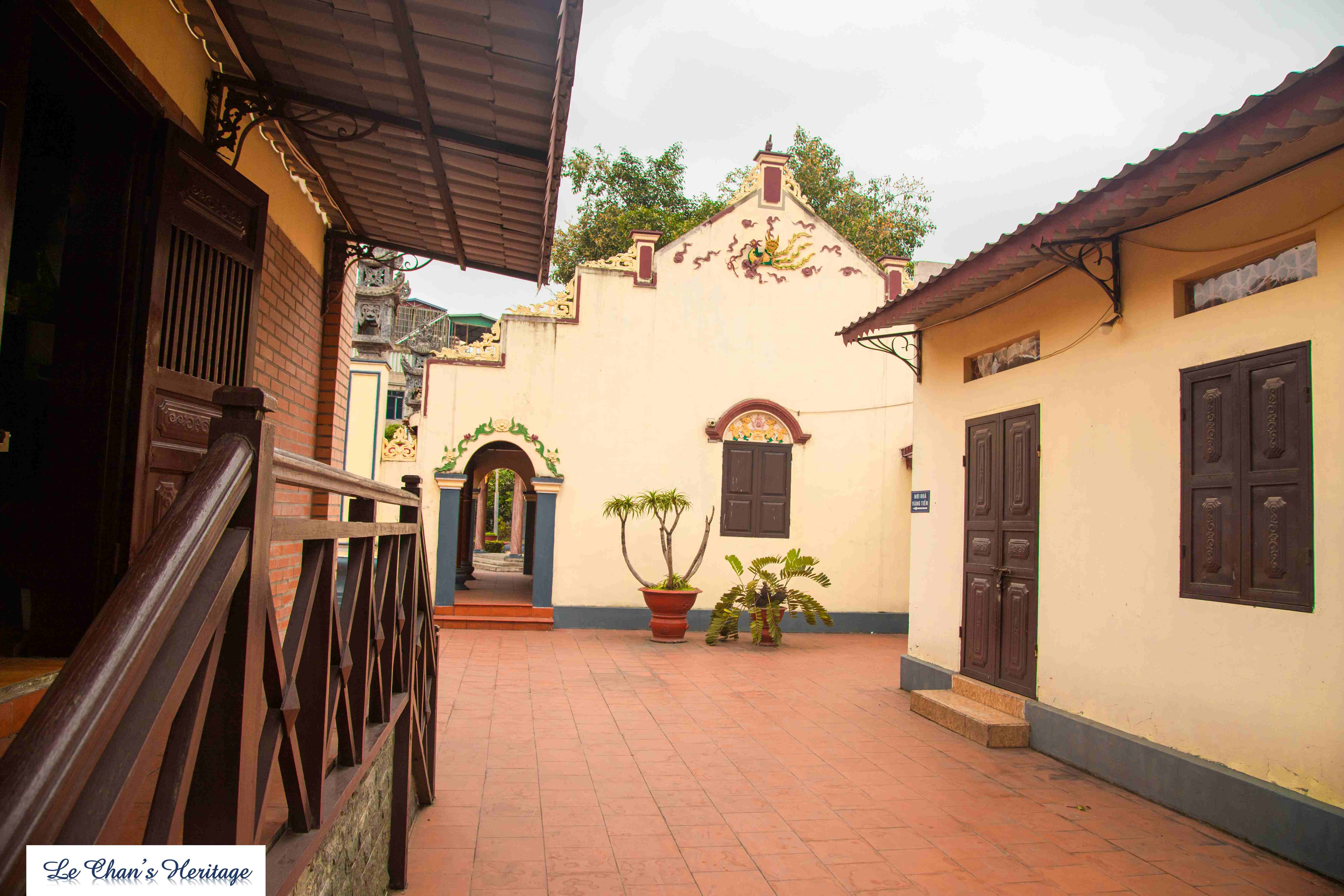1. Vị trí: Lăng miếu Đôn Nghĩa tọa lạc tại số 89 phố Phạm Tử Nghi, phường Vĩnh Niệm, quận Lê Chân, thành phố Hải Phòng.
2. Lịch sử hình thành: Đôn Nghĩa vốn là tên của một xã (làng) thuộc tổng An Dương, huyện An Dương, phủ Kinh Môn, trấn Hải Dương (nay là thôn Đôn Nghĩa, xã Vĩnh Niệm, huyện An Hải, thành phố Hải Phòng). Lăng - miếu Đôn Nghĩa do dân làng Đôn Nghĩa xây dựng để tôn thờ dũng tướng nổi danh thời nhà Mạc (1527 - 1592) - Phạm Tử Nghi.
3.
Nhân vật: Miếu Đôn Nghĩa là một công trình kiến trúc nghệ thuật cổ kính do dân
làng Đôn Nghĩa xây dựng để tôn thờ dũng tướng nổi danh thời nhà Mạc (1527 -
1592) - Phạm Tử Nghi. Ông là nhân vật kiệt xuất ở thế kỷ 16, là danh tướng tài
ba hết lòng vì dân vì nước, là người có nhiều công lao đối với đất nước, quê
hương.
4. Cấu trúc: Khu di tích lăng - miếu Đôn Nghĩa đã trở thành một chỉnh thể công trình kiến trúc văn hóa, gồm bái đường, hậu cung, khu lăng mộ và khu vực cảnh quan thiên nhiên với vườn hoa, chậu cảnh. Đặc biệt, số lượng cây cổ thụ gắn liền với khu vực lăng - miếu như đa, si, đại, góp phần làm tăng thêm vẻ tôn nghiêm, u tịnh của khu di tích. Hiện nay lăng - miếu Đôn Nghĩa còn bảo lưu được nhiều di vật cổ là đồ tế tự bằng gỗ sơn son thếp vàng rực rỡ, mang giá trị mỹ thuật thời Nguyễn cuối thế kỷ 19 như: cửa võng, kiệu bát cống, lonh đình, bát biểu, một số di vật là đồ đồng, đồ sứ như bộ tam sự, rùa, hạc, bát hương đồng và men sứ… Toàn bộ khu lăng - miếu nằm trong hệ thống tường bao quanh có cổng xây cất theo lối chồng diềm tám mái, bên trong cổng đặt bức bình phong xây theo lối cuốn thư soi bóng xuống hồ nước trong xanh phía sau kiến trúc tòa miếu thờ là khu lăng mộ Phạm Tử Nghi.
5. Vai trò: Lăng – miếu Đôn Nghĩa được nhà nước xếp hạng di tích Lịch sử Văn hóa năm 2001. Lăng miếu Đôn Nghĩa là công trình kiến trúc nghệ thuật cổ được bảo tồn khá nguyên vẹn, nơi bảo lưu nhiều tập tục, sinh hoạt văn hóa và lễ hội truyền thống của nhân dân địa phương, là một đài tưởng niệm về Nam Hải đại vương, Tứ Dương Hầu Phạm Tử Nghi tại quê hương ông. Vào dịp kỷ niệm ngày sinh 02 – 02 và ngày hóa 14 - 9 Âm lịch, lễ hội diễn ra đơn giản và có nhiêu trò bách hý dân gian, thu hút khách thập phương đến với tấm lòng thành nơi tín ngưỡng tôn giáo của địa phương.
1. Location: Don Nghia Mausoleum is located at 89 Pham Tu Nghi Street, Vinh Niem Ward, Le Chan District, Hai Phong City.
2. History of formation: Don Nghia was originally the name of a commune (village) in An Duong canton, An Duong district, Kinh Mon district, Hai Duong town (now Don Nghia village, Vinh Niem commune, An Hai district, Hai Duong city). Hai Phong city). Don Nghia mausoleum - temple was built by Don Nghia villagers to worship the famous brave general of the Mac Dynasty (1527 - 1592) - Pham Tu Nghi.
3. Character: Don Nghia Temple is an ancient artistic architectural work built by Don Nghia villagers to worship the famous brave general of the Mac Dynasty (1527 - 1592) - Pham Tu Nghi. He was an outstanding figure in the 16th century, a talented general who devoted himself to the people and the country, and a person who made many contributions to his country and homeland.
4. Structure: Don Nghia mausoleum - temple relic area has become an entire cultural architectural work, including a worship hall, a harem, a tomb area and a natural landscape area with flower gardens and ornamental pots. In particular, the number of ancient trees associated with the mausoleum - temple area such as banyan, si, and dai, contribute to increasing the solemnity and serenity of the relic site. Currently, Don Nghia mausoleum - temple still preserves many ancient relics, including sacrificial objects made of brightly painted and gilded wood, with artistic value of the Nguyen Dynasty at the end of the 19th century, such as: hammock doors, bowl-shaped palanquins, and communal houses. , octagon, some relics are bronze and porcelain items such as triptychs, turtles, cranes, bronze incense bowls and porcelain enamel... The entire mausoleum - temple complex is located within a system of surrounding walls with gates built in an overlapping manner. With eight roofs, inside the gate is a screen built in the style of a scroll reflecting on the clear blue lake. Behind the temple architecture is Pham Tu Nghi's tomb.
5. Role: Don Nghia mausoleum - temple was ranked by the state as a Historical and Cultural relic in 2001. Don Nghia mausoleum and temple is an ancient artistic architectural work that is preserved quite intact, where many customs and traditions are preserved. cultural activities and traditional festivals of the local people, is a memorial to the great king of Nam Hai, Tu Duong Hau Pham Tu Nghi in his hometown. On the occasion of the birthday anniversary of February 2 and the 14th day of the 9th lunar calendar, the festival takes place simply and has many folk games, attracting visitors from all over with sincerity in the local religious beliefs. direction.


















